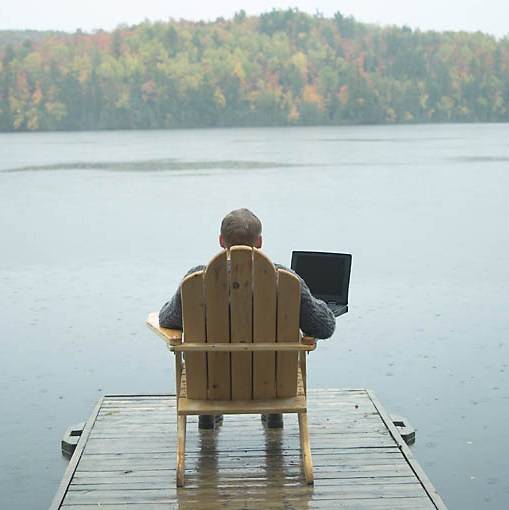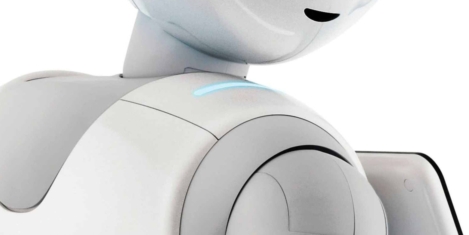To provide the best experiences, we use technologies like cookies to store and/or access device information. Consenting to these technologies will allow us to process data such as browsing behaviour or unique IDs on this site. Not consenting or withdrawing consent, may adversely affect certain features and functions.
The technical storage or access is strictly necessary for the legitimate purpose of enabling the use of a specific service explicitly requested by the subscriber or user, or for the sole purpose of carrying out the transmission of a communication over an electronic communications network.
The technical storage or access is necessary for the legitimate purpose of storing preferences that are not requested by the subscriber or user.
The technical storage or access that is used exclusively for statistical purposes.
The technical storage or access that is used exclusively for anonymous statistical purposes. Without a subpoena, voluntary compliance on the part of your Internet Service Provider, or additional records from a third party, information stored or retrieved for this purpose alone cannot usually be used to identify you.
The technical storage or access is required to create user profiles to send advertising, or to track the user on a website or across several websites for similar marketing purposes.
 The CIPD is calling on the government to ease restriction on immigrants from non EU countries, in the wake of the publication of new official figures which show how the number of EU citizens moving to the UK has decreased over the last year. Earlier this month, the CBI issued a similar plea as fears mount over the impact of Brexit on the UK’s skills base.
The CIPD is calling on the government to ease restriction on immigrants from non EU countries, in the wake of the publication of new official figures which show how the number of EU citizens moving to the UK has decreased over the last year. Earlier this month, the CBI issued a similar plea as fears mount over the impact of Brexit on the UK’s skills base.






 The repercussions of a no-deal Brexit are being
The repercussions of a no-deal Brexit are being 
 The majority of UK employees check their work emails while on holiday despite the fact that their employers do not want or expect them to keep in touch, new YouGov research has revealed. It seems the majority (60 percent) of those who use email for work check their inboxes while on holiday. One in four (25 percent) check ‘very often’, one in five (19 percent) check ‘sometimes’, and one in six (16 percent) check ‘rarely’. Just four in ten (40 percent) say they never look at their emails. This is despite the fact that eight in ten workers (80 percent) would prefer to ‘completely switch off’ when they’re on holiday, rather than stay on top of what’s going on in the office. The exception is those who check their emails ‘very often’. Half of this group (47 percent) say they’d rather stay on top of what’s going on at work, with the other half (50 percent) happy to stay out of work issues while on vacation. The research suggests however that fewer than one in six think their managers care whether they stay in touch or not.
The majority of UK employees check their work emails while on holiday despite the fact that their employers do not want or expect them to keep in touch, new YouGov research has revealed. It seems the majority (60 percent) of those who use email for work check their inboxes while on holiday. One in four (25 percent) check ‘very often’, one in five (19 percent) check ‘sometimes’, and one in six (16 percent) check ‘rarely’. Just four in ten (40 percent) say they never look at their emails. This is despite the fact that eight in ten workers (80 percent) would prefer to ‘completely switch off’ when they’re on holiday, rather than stay on top of what’s going on in the office. The exception is those who check their emails ‘very often’. Half of this group (47 percent) say they’d rather stay on top of what’s going on at work, with the other half (50 percent) happy to stay out of work issues while on vacation. The research suggests however that fewer than one in six think their managers care whether they stay in touch or not.




 More SMEs than larger businesses offer flexible working as a way of reducing absences, research from industry body Group Risk Development (GRiD), suggests. The research showed that 35 percent of SMEs with up to 249 employees are actively using flexible working strategies to combat absence compared to just 23 percent of organisations with over 250 employees. Drilling down further into the detail, 38 percent of micro businesses with between 1 and 9 employees use flexible working as a means to reduce absence. Flexible working now means a lot more than allowing an employee to work from home when they are feeling under the weather, and following changes in the law in 2014, it is now an option for everyone with at least 26 weeks continuous employment to request it – not just those with children or carer responsibilities. It also includes part-time working, term-time working, job sharing, compressed hours and flexitime. A greater degree of flexibility can increase productivity and reduce burn out, particularly in stressful occupations.
More SMEs than larger businesses offer flexible working as a way of reducing absences, research from industry body Group Risk Development (GRiD), suggests. The research showed that 35 percent of SMEs with up to 249 employees are actively using flexible working strategies to combat absence compared to just 23 percent of organisations with over 250 employees. Drilling down further into the detail, 38 percent of micro businesses with between 1 and 9 employees use flexible working as a means to reduce absence. Flexible working now means a lot more than allowing an employee to work from home when they are feeling under the weather, and following changes in the law in 2014, it is now an option for everyone with at least 26 weeks continuous employment to request it – not just those with children or carer responsibilities. It also includes part-time working, term-time working, job sharing, compressed hours and flexitime. A greater degree of flexibility can increase productivity and reduce burn out, particularly in stressful occupations.






 Most organisations already offer some sort of flexible working and over half of employees now ask to work flexibly, a new survey from XpertHR research has claimed. One in 12 organisations (8.1 percent) reported that all employees worked flexibly, with employers attributing the rise to a more supportive workplace culture and the impact of recent legal changes. The survey found that more than half (55.9 percent) had seen an increase in flexible working requests over the past two years. Three out of four believed that this was due to changes in workplace culture in recent years, attributable in part to a change in the law in 2014 that extended the right to request flexible working to all employees with at least 26 weeks’ service. Flexible working goes across the board, and includes part-time working, variable start and finish times, home-working and other options.
Most organisations already offer some sort of flexible working and over half of employees now ask to work flexibly, a new survey from XpertHR research has claimed. One in 12 organisations (8.1 percent) reported that all employees worked flexibly, with employers attributing the rise to a more supportive workplace culture and the impact of recent legal changes. The survey found that more than half (55.9 percent) had seen an increase in flexible working requests over the past two years. Three out of four believed that this was due to changes in workplace culture in recent years, attributable in part to a change in the law in 2014 that extended the right to request flexible working to all employees with at least 26 weeks’ service. Flexible working goes across the board, and includes part-time working, variable start and finish times, home-working and other options.


 As we recently
As we recently 







